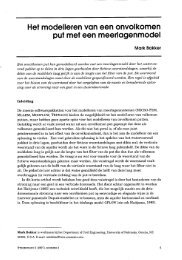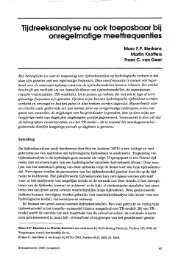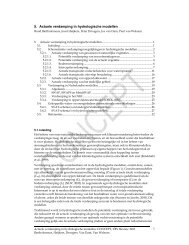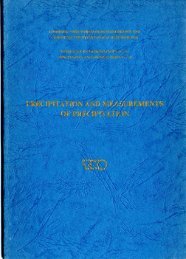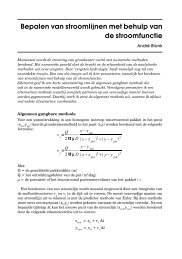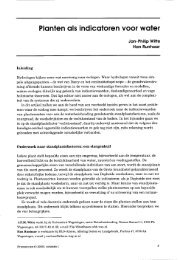Hydrochemistry and energy storage in aquifers - NHV.nu
Hydrochemistry and energy storage in aquifers - NHV.nu
Hydrochemistry and energy storage in aquifers - NHV.nu
Create successful ePaper yourself
Turn your PDF publications into a flip-book with our unique Google optimized e-Paper software.
exceptional <strong>in</strong> that after <strong>in</strong>itial removal of carbonate by rais<strong>in</strong>g the pH, only m<strong>in</strong>imal further<br />
soften<strong>in</strong>g is required, which is provided by an ion exchanger system (J. Despois, personnel<br />
communication, Oct. 1988).<br />
The retrograde solubility of carbonate m<strong>in</strong>erals (Garrels <strong>and</strong> Christ, 1965) generally results<br />
<strong>in</strong> their rapid precipitation when water that was <strong>in</strong> equilibrium with a carbonate m<strong>in</strong>eral at<br />
some temperature is heated to some appreciably higher temperature. At the St. Paul (USA)<br />
site, major portions of the aquifer sediment are dolomitic. Thus, it is not surpris<strong>in</strong>g that the<br />
groundwaters are <strong>in</strong> approximate equilibrium with calcite (Holm et al., 1987). Copious<br />
amounts (600-800 kg per cycle) of aragonite precipitated (Walton, 1986) after rapidly<br />
heat<strong>in</strong>g the native groundwater to 87°C <strong>in</strong> the first short cycle.<br />
The partial pressure of CO, may be much above atmospheric levels <strong>in</strong> conf<strong>in</strong>ed <strong>aquifers</strong>. If<br />
C02 is allowed to escape from an ATES system, the carbonate equilibria will shift, as<br />
illustrated below to produce C02(g) <strong>and</strong> consume H+, result<strong>in</strong>g <strong>in</strong> a pH <strong>in</strong>crease <strong>and</strong><br />
possible carbonate precipitation:<br />
H,CO:<br />
< = > H20 + CO, (g)<br />
HCOj + H+<br />
< = > H,CO:<br />
The degree of oversaturation with pure calcite of a thermally altered water is affected by the<br />
formation of solid solutions, the presence of <strong>nu</strong>cleation <strong>and</strong> crystal growth poisons, <strong>and</strong><br />
temperature <strong>and</strong> complexation of Ca by dissolved organic carbon (DOC). The formation of<br />
solid solutions between calcite <strong>and</strong> other metal carbonates that form the same rhombohedral<br />
structure can cause large deviations from the equilibrium solubility of pure calcite (E.A.<br />
Jenne <strong>and</strong> R.W. Smith, unpublished data). Nucleation <strong>and</strong> crystal growth poisons can also<br />
cause oversaturation of calcite <strong>and</strong> its solid-solutions. These factors are thought to account<br />
for the observed oversaturation with respect to pure calcite of various ATES waters.<br />
At some ATES <strong>in</strong>stallations, moderate oversaturation with calcite, even account<strong>in</strong>g for solid-<br />
solution effects, does not result <strong>in</strong> scal<strong>in</strong>g of the heat exchanger. The rate of calcite





